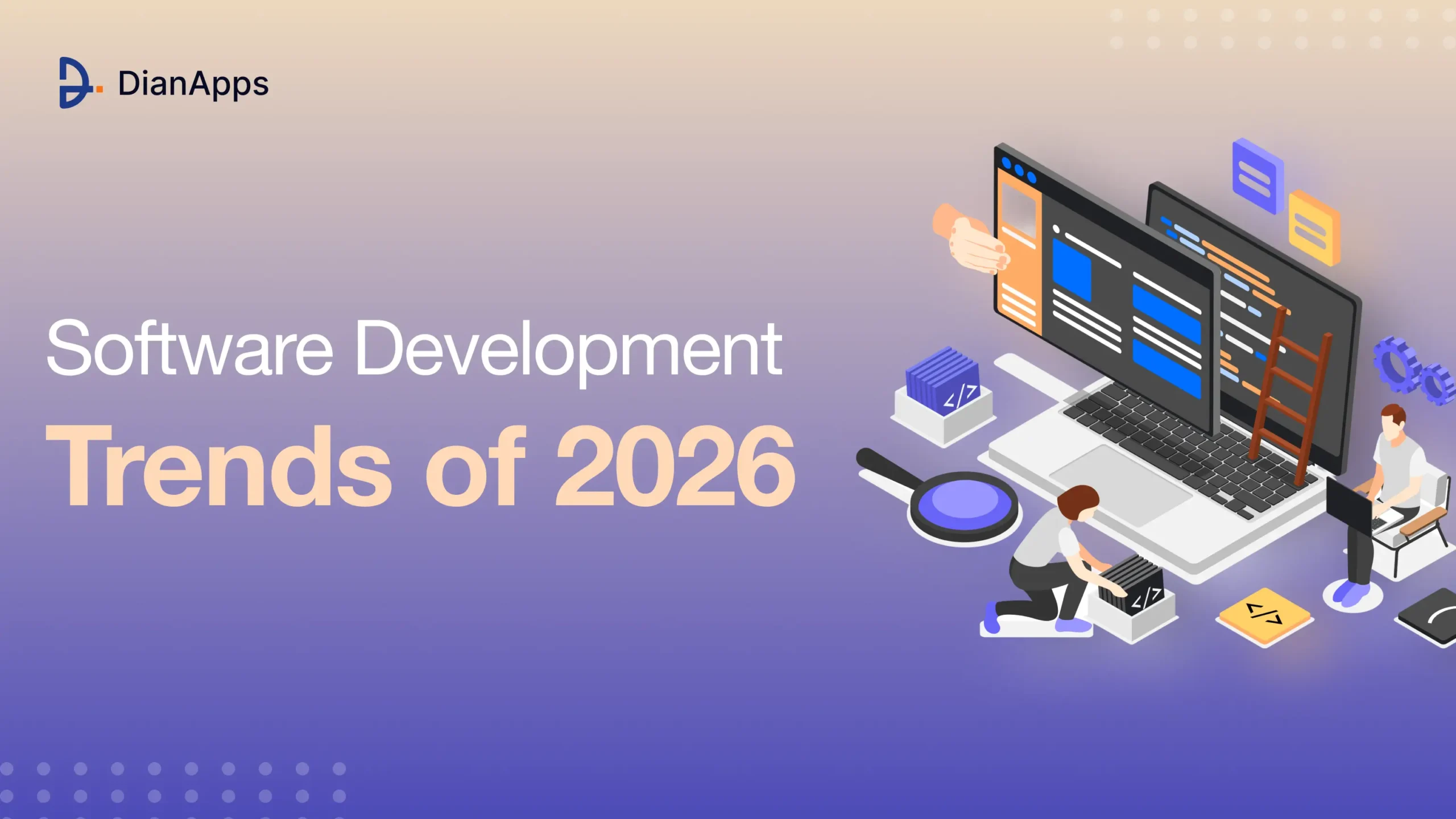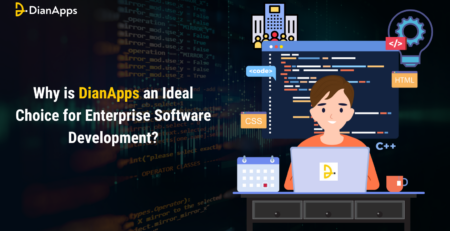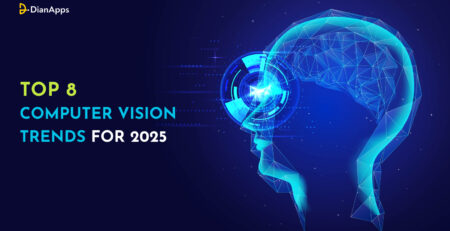Top 20 Software Development Trends for 2026
Every January, we make resolutions. Some stick, some vanish faster than your phone battery on a Zoom call. But in the world of tech, the resolutions don’t just stick; they shape the way we live, work, and scroll endlessly at 2 AM.
2026 will be no exception. Software is evolving at lightning speed, and it’s no longer just about writing clean code. It’s about creating solutions that are fast, intelligent, secure, and yes, sometimes even a little futuristic.
But here’s the catch: if you’re still thinking software development is only about “apps and websites,” you’re missing the bigger picture. From AI software development to cloud-native solutions and even quantum computing, the trends of 2026 will be rewriting the rulebook.
And this is exactly where partnering with a custom software development company makes sense. Because let’s be honest, no single in-house team can keep up with everything that’s happening in AI, blockchain, cybersecurity, and beyond.
So grab your coffee (or energy drink, we don’t judge), and let’s dive into the 20 software development trends that will dominate 2026.
Top 20 Software Development Trends for 2026
1. Low-Code and No-Code Development
Think of low-code/no-code as the IKEA of software tools that let you build powerful apps without being a master carpenter.
These platforms empower non-developers to spin up apps quickly, while experienced developers save time by skipping repetitive coding tasks. In 2026, businesses will lean heavily on low-code for rapid prototyping, automation, and small-scale internal tools.
The big win? Lower costs, faster delivery, and freeing developers to focus on complex, high-value projects. Low-code isn’t replacing developers, it’s making their lives easier.
Recommended Read: 10 Best Low-Code Platforms You Need To Know About
2. Blockchain Beyond Finance
Blockchain is no longer just “Bitcoin’s backbone.” By 2026, it’s infiltrating industries like healthcare, logistics, and even entertainment.
Its biggest strength lies in transparency and tamper-proof records. Imagine medical histories that can’t be faked, supply chains that can’t be manipulated, or voting systems that can’t be hacked. That’s the real promise of blockchain development.
For businesses, this means trust at scale. Whether you’re in fintech or farming, blockchain-based apps will soon be a normal part of operations.
3. Cybersecurity-First Development
Here’s the truth: hackers don’t sleep. Which means your software can’t afford to be a “patch-later” project anymore.
In 2026, cybersecurity isn’t an afterthought; it’s a foundation. Developers are baking encryption, authentication, and AI-driven monitoring right into apps from the start.
With phishing scams, ransomware, and data leaks on the rise, businesses that don’t prioritize cybersecurity in software design risk not only financial loss but also customer trust.
4. DevSecOps Integration
DevOps was about speed. DevSecOps is about speed plus security.
In this approach, security isn’t left for the final testing phase. It’s embedded at every step of design, coding, deployment, and maintenance.
By 2026, DevSecOps will be the default for any enterprise software project. It reduces vulnerabilities, streamlines compliance, and saves teams from costly fixes later.
Think of it as putting locks on your doors while building the house, not after moving in.
5. Internet of Things (IoT) Expansion
From smart fridges to factory sensors, IoT is everywhere, and it’s hungry for better software.
In 2026, IoT software development will focus on energy efficiency, real-time analytics, and security (because no one wants a hacked pacemaker).
For businesses, IoT apps unlock new revenue streams, predictive maintenance, and smarter decision-making. If data is gold, IoT is the mine.
6. Progressive Web Apps (PWAs)
PWAs are like the Swiss Army knife of applications: fast, lightweight, and able to work offline.
Unlike native apps, PWAs don’t demand app store approvals or heavy downloads. Users simply click a link, and boom, they’re in.
In 2026, PWAs will dominate retail, travel, and content industries because they cut costs while delivering top-notch user experiences. For businesses, PWAs are a win-win: cheaper to build, easier to maintain, and accessible to all.
Recommended Read: Progressive Web Apps Development: Benefits, Cost, and Features
7. AI-Powered Software Development
AI isn’t just the feature inside your app anymore; it’s building the app with you.
From AI-assisted coding tools to predictive bug detection, AI software development will make the process faster and smarter. Imagine autocomplete, but for entire code modules.
By 2026, developers won’t just write code; they’ll co-create with AI, focusing more on strategy while machines handle the repetitive stuff.
8. Cloud-Native Applications
If 2020 was about moving to the cloud, 2026 is about thriving there.
Cloud-native development uses microservices, containers, and APIs to build apps that scale effortlessly. Whether your users spike overnight or spread globally, cloud-native apps don’t flinch.
For businesses, this means lower downtime, reduced infrastructure costs, and continuous delivery. In short, cloud-native isn’t just “where” software lives it’s “how” it grows.
9. Edge Computing
Picture this: your smart car brakes instantly because data is processed locally, not miles away in a cloud server. That’s edge computing.
By 2026, apps will increasingly use edge computing to reduce latency, boost performance, and cut bandwidth costs.
It’s especially vital for healthcare devices, manufacturing automation, and logistics tracking. The closer the processing happens to the user, the faster and safer the experience.
10. DevOps Evolution

DevOps isn’t going anywhere; it’s evolving.
In 2026, DevOps will focus heavily on automation, containerization, and AI-driven monitoring. The goal? Even faster releases with fewer errors.
Businesses that embrace DevOps culture will see shorter development cycles, happier developers, and products that actually deliver what customers want.
11. AI in Cross-Platform Development
Cross-platform tools like Flutter and React Native have already changed the game. Now, AI is stepping in to supercharge them.
In 2026, AI will optimize cross-platform code for performance, adapt UIs automatically for devices, and even predict bugs before launch.
For businesses, this means cost-effective apps that still deliver a “native” feel across iOS, Android, and web.
12. Quantum Computing Exploration
Quantum computing is like rocket fuel for problem-solving.
By 2026, most businesses won’t use it directly, but quantum technologies will start influencing cryptography, simulations, and optimization-heavy industries.
Forward-thinking developers are already exploring quantum-safe algorithms to future-proof software. It may sound abstract today, but it’ll be mission-critical tomorrow.
13. Virtual & Augmented Reality
VR and AR aren’t just for gamers anymore. In 2026, they’ll reshape industries from education to real estate.
Immersive training simulations, virtual shopping aisles, and AR healthcare tools are becoming everyday apps.
For developers, this trend means designing interfaces that blend digital and physical worlds seamlessly. For businesses, it means deeper engagement and new revenue opportunities.
14. Microservices Architecture
Monolithic apps are like giant Jenga towers; change one piece, and everything wobbles. Microservices fix that.
By 2026, breaking applications into modular services will be the standard. Each component can be updated, scaled, or replaced without affecting the whole.
It’s cleaner, faster, and perfect for enterprises that want agility without chaos.
15. Distributed Teams & Remote Development
Software development is officially borderless. In 2026, distributed teams will be the new normal.
This means software tools must prioritize real-time collaboration, version control, and secure communication.
For businesses, remote-first development expands talent pools globally while cutting costs. For developers, it means working in comfy clothes or from a beach café.
16. AI & ML Integration
Smart apps are no longer optional; they’re expected.
From Netflix recommendations to fraud detection in banks, AI and ML integration make software more predictive, adaptive, and personal.
In 2026, expect businesses to embed machine learning into even the most “ordinary” apps, making them smarter over time.
17. Advanced Connectivity with 5G
5G is faster than TikTok; loading its backbone for futuristic apps.
By 2026, developers will design software that leverages ultra-low latency for AR shopping, autonomous cars, and remote surgeries.
Combined with cloud and edge computing, 5G will redefine what “real time” truly means in software.
18. Digital Trust and Cybersecurity
In an age of deepfakes and data breaches, trust is currency.
In 2026, apps that prioritize digital trust and cybersecurity through blockchain records, privacy-first design, and transparent data policies will win user loyalty.
Software isn’t just about features anymore. It’s about creating a safe space for users to interact and transact.
Recommended Read: AI Cybersecurity Solutions: Identify its Importance and Applications
19. Sustainable Software Development
Tech is powerful, but it also consumes enormous energy.
By 2026, companies will adopt greener practices: carbon-aware coding, eco-friendly cloud services, and efficient algorithms.
Green software isn’t just good PR; it’s becoming a competitive advantage. Businesses and users alike are choosing sustainability-driven brands.
20. Agentic AI
Meet your new digital coworker: agentic AI.
Unlike basic chatbots, agentic AI systems can plan, decide, and act with minimal supervision. In 2026, these will handle workflows, manage repetitive tasks, and even collaborate on creative problem-solving.
It’s one of the boldest software development trends of 2026, signaling a shift where machines don’t just assist, they partner.
Beyond Trends: How Businesses Should Prepare
Spotting trends is easy. Preparing for them? That’s where the magic happens.
To thrive in 2026’s software landscape, businesses need more than buzzwords:
- Partner smartly: Work with a custom mobile app development firm that keeps pace with AI, blockchain, and edge computing.
- Train teams: Developers must upskill in quantum computing, cloud-native frameworks, and AI software development.
- Embrace agility: Trends evolve fast. Agile methodologies and DevOps cultures help businesses pivot without chaos.
- Invest in security: From digital trust to DevSecOps, cybersecurity should be baked into every decision.
- Think global: Distributed teams and global collaboration aren’t temporary; they’re the future.
Above all, the mindset shift is key. Businesses that see software not as a tool but as a growth engine will outpace competitors. 2026 won’t just reward tech adopters; it will reward tech leaders.
What Happens If Businesses Ignore These Trends?
Falling Behind Competitors
Competitors adopting AI software development or blockchain solutions will deliver faster, smarter, and more secure services, leaving your business lagging behind.
Higher Operational Costs
Without automation, you’ll continue relying on manual processes, which are slower and more expensive compared to AI or ML-powered workflows.
Loss of Customer Trust
Ignoring cybersecurity-first development and digital trust strategies can result in breaches, damaging your reputation permanently. Customers rarely forgive repeated data mishaps.
Poor User Experience
Businesses that skip cloud-native or edge computing risk downtime, laggy apps, and unreliable performance, leading users to switch to competitors.
Missed Market Opportunities
Trends like PWAs, VR/AR, and IoT open new revenue streams. Ignoring them means leaving money (and customers) on the table.
Talent Drain
Developers want to work with modern tools and frameworks. If your company clings to outdated systems, top talent will move to forward-thinking competitors.
Increased Long-Term Costs
Maintaining legacy systems becomes costlier over time. Patching outdated tech is far more expensive than adopting scalable solutions early.
Risk of Irrelevance
Ignoring software development trends 2026 isn’t just about falling behind; it can make your business obsolete in industries driven by innovation.
Final Words
The software development trends 2026 are bold, fast, and unstoppable. From AI-driven innovation and blockchain security to sustainability and quantum exploration, these trends are rewriting the rules of digital business.
The choice is clear: adapt or get left behind. With the right vision and the right partners, you can turn these trends into opportunities. And if you’re looking for a forward-thinking mobile app development company, now’s the time to make that move.




